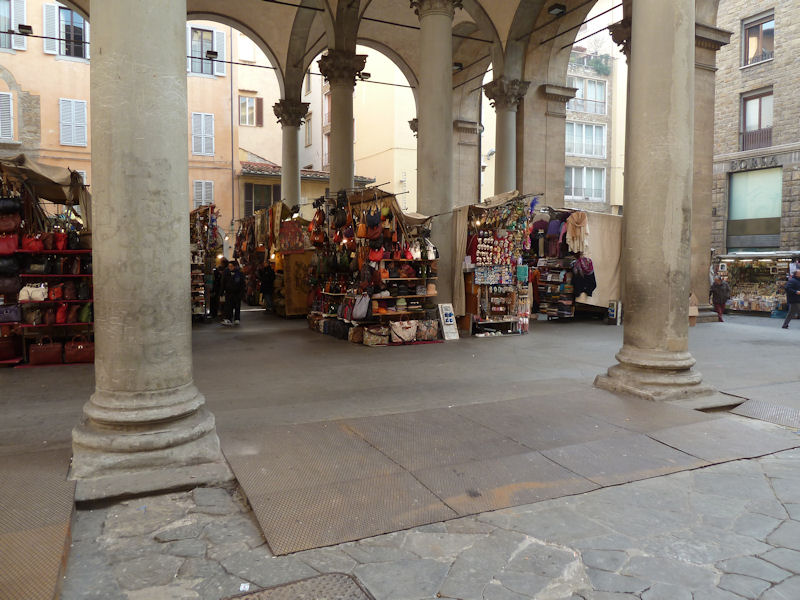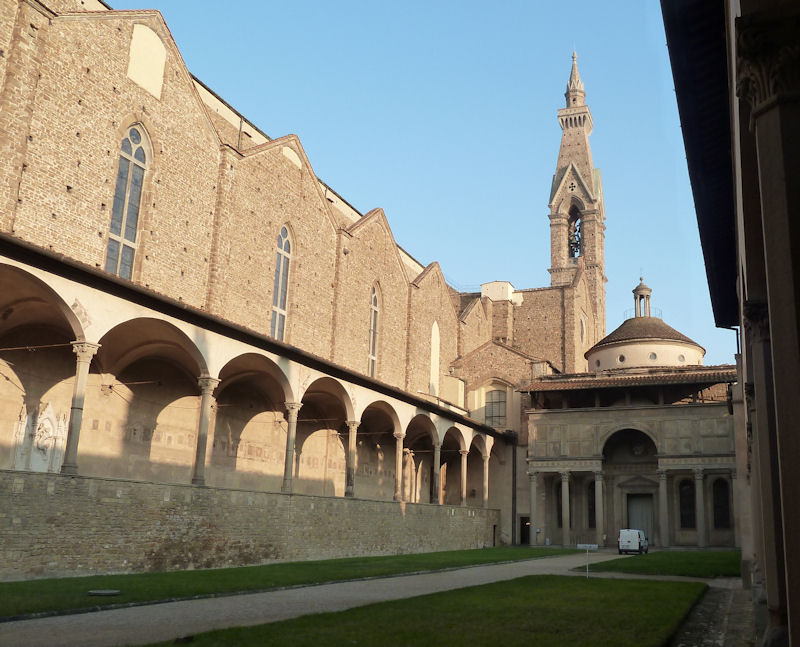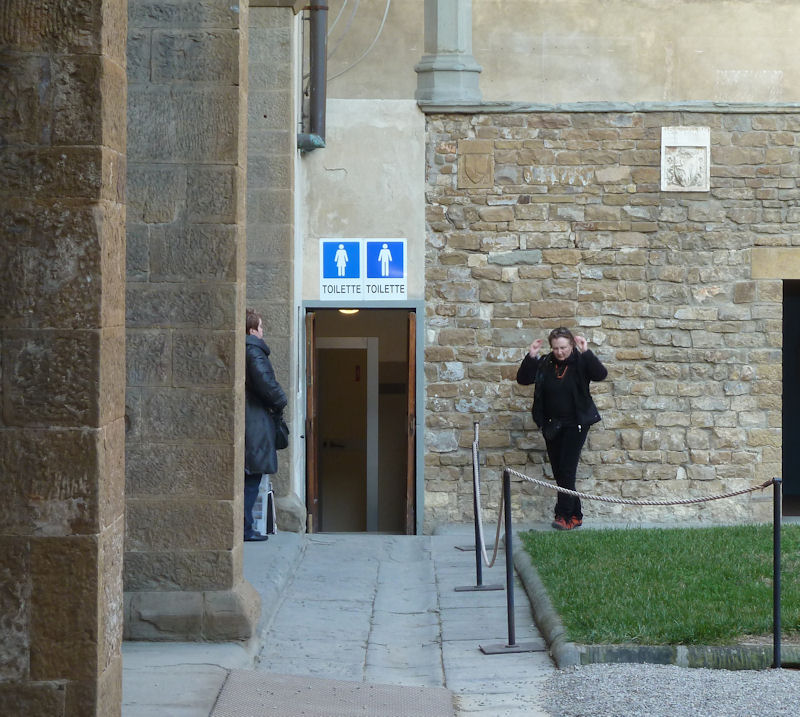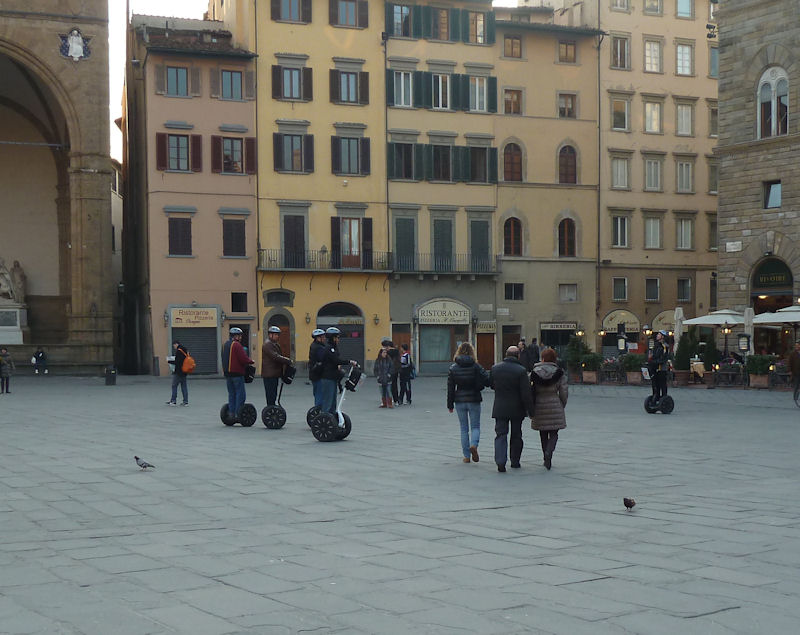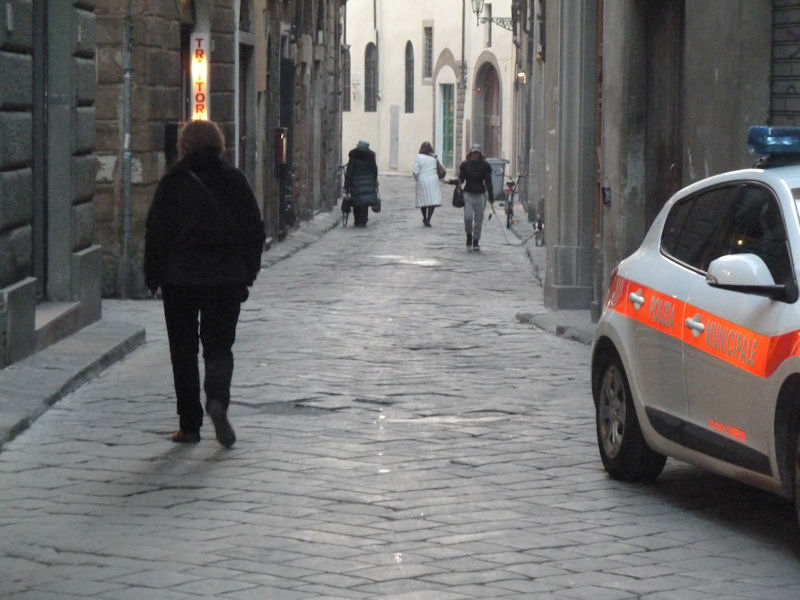Engulfed in sweaty crowds in mid-summer Florence more than 30 years ago, one has never gone back, but has always felt cheated.
So, since there's no winter in Switzerland anymore anyway, we'll try a February visit.
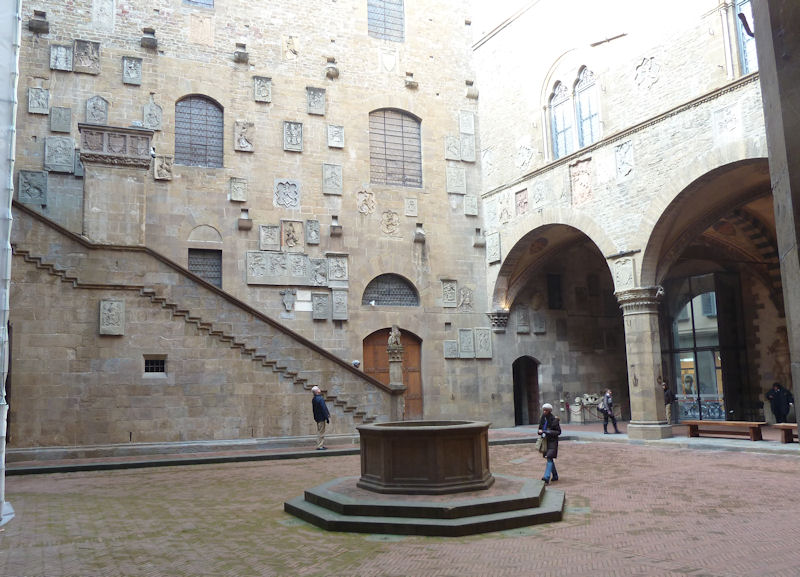
Once a military barracks and prison, now a national museum -- the Bargello fortress was built in the 1260s to house the Capitano del Popolo, or People's Captain, the town's military chief, and it's the oldest public building in the city.
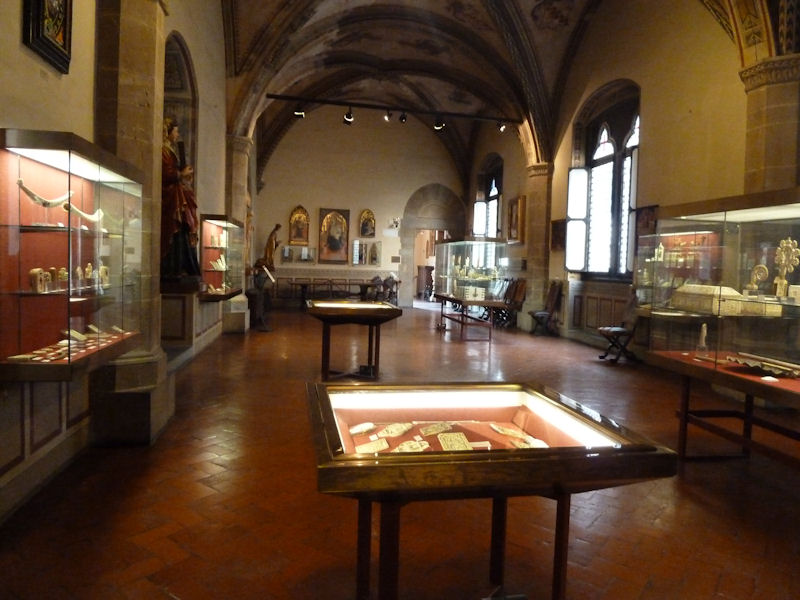
It's got great stuff in it, Michelangelo, Donatello's poncey 'David', Sansovino and Giambologna, Cellini, and wonderful Della Robbia glazed terra cottas . . .

As well as lots of odds and ends, bits and bobs, and related curiosities.

The hall with the Donatello 'David' against the far wall. Photos were not allowed, of course, so this shot was taken from inside a briefcase.
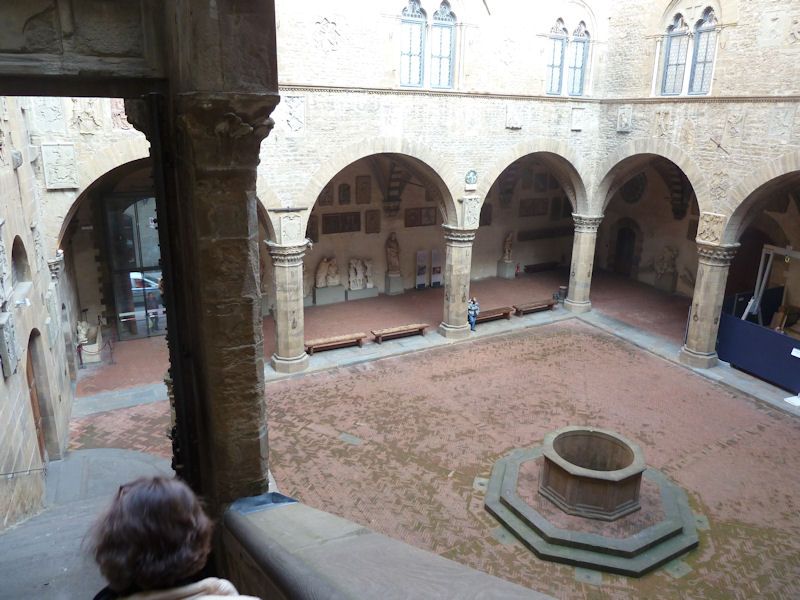
The main courtyard of the Bargello Palace
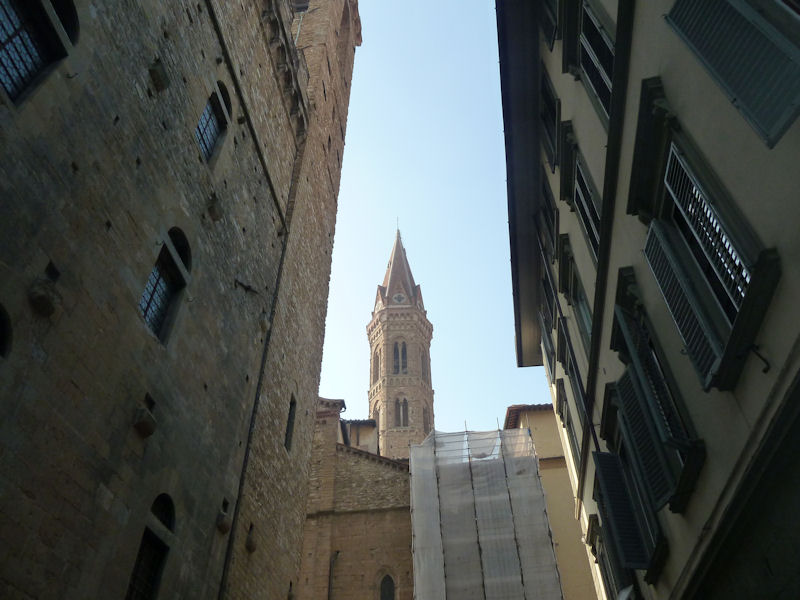
Outside the Bargello
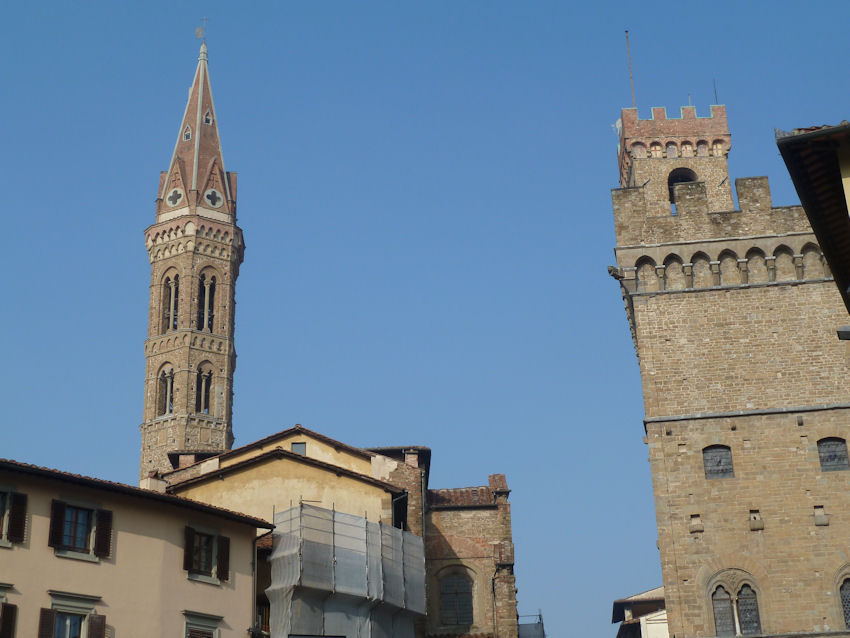
The towers of the Badia Fiorentina and the Bargello tower, called the Volognana, from the 12th century
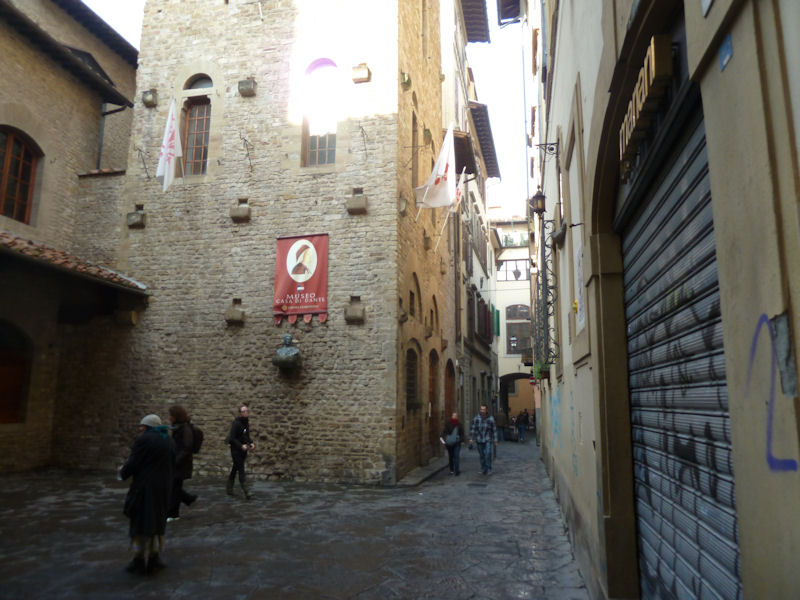
Dante's house ( ). Purpose-built or at least converted in 1911 to bring Dante memorabilia to the masses, the "Casa di Dante" is in the Alighieri family's neighborhood, right enough, and now houses the Dante museum a few doors up from "Dante's church" in that alley. The great poet certainly did haunt these very streets for his first 36 years, but he was forced into exile amidst the White and Black Guelph factional fights in 1302 and ended his life in Ravenna in 1321. Ravenna refused to send his remains back to enliven Florentine tourism.
). Purpose-built or at least converted in 1911 to bring Dante memorabilia to the masses, the "Casa di Dante" is in the Alighieri family's neighborhood, right enough, and now houses the Dante museum a few doors up from "Dante's church" in that alley. The great poet certainly did haunt these very streets for his first 36 years, but he was forced into exile amidst the White and Black Guelph factional fights in 1302 and ended his life in Ravenna in 1321. Ravenna refused to send his remains back to enliven Florentine tourism.
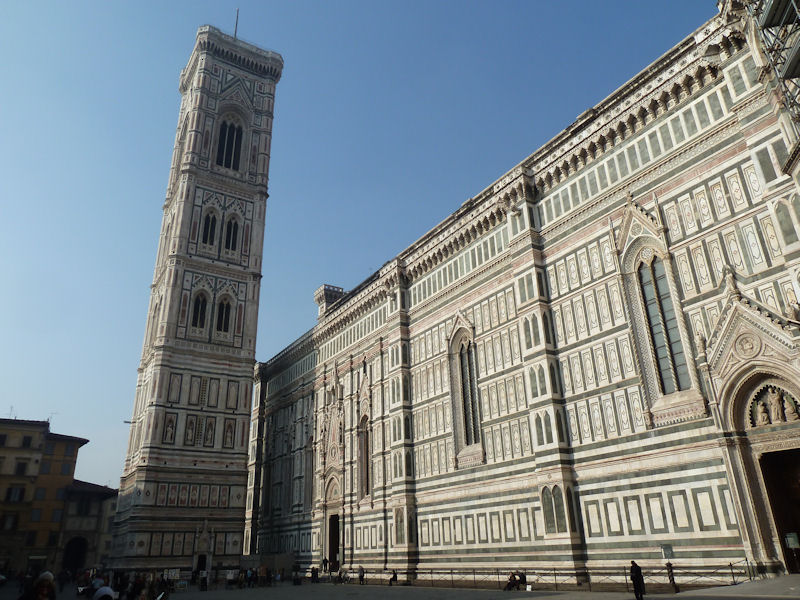
Another day, 7 February, and we're back to the Giotto belltower and cathedral of Santa Maria del Fiore

The inside of the Duomo, with the tilework that tries to convince you that you're standing half a metre below the floor level.

The original 4th century church, dedicated to Santa Reparata, can be wandered about in under the present cathedral (which seems to be kept off us by those little poles strategically placed)

The imposing façade (from the 1880s)

There are big bronze doors everywhere here, but these are on the main façade -- they're not the celebrated 15th century doors all round the Baptistry by Ghiberti, helped by Donatello, Uccello and others.

Like this one
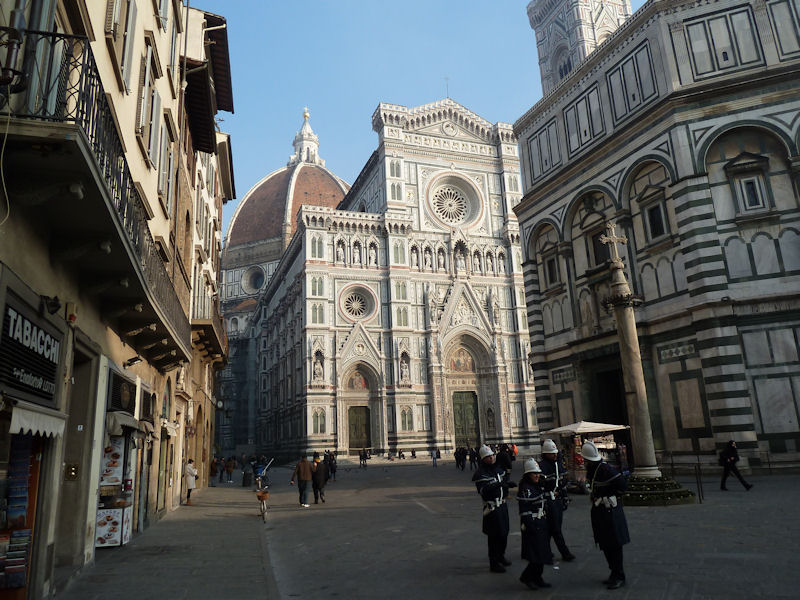
The whole Piazza del Duomo was planned out as a whole at the end of the 13th century to capitalize on the 11th-12th century Baptistry of San Giovanni (on the right, behind the police persons).
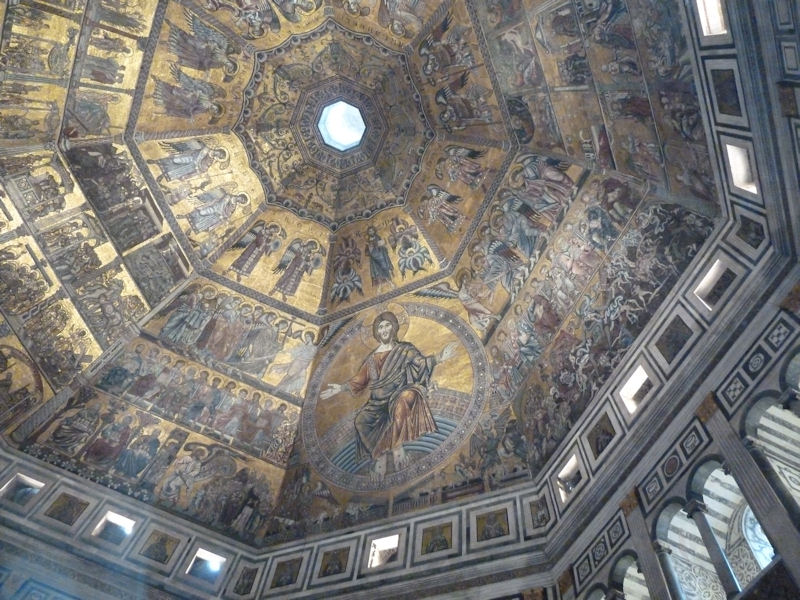
The mosaics in the dome of the eight-sided Baptistry, with the 26-foot Super Jesus.
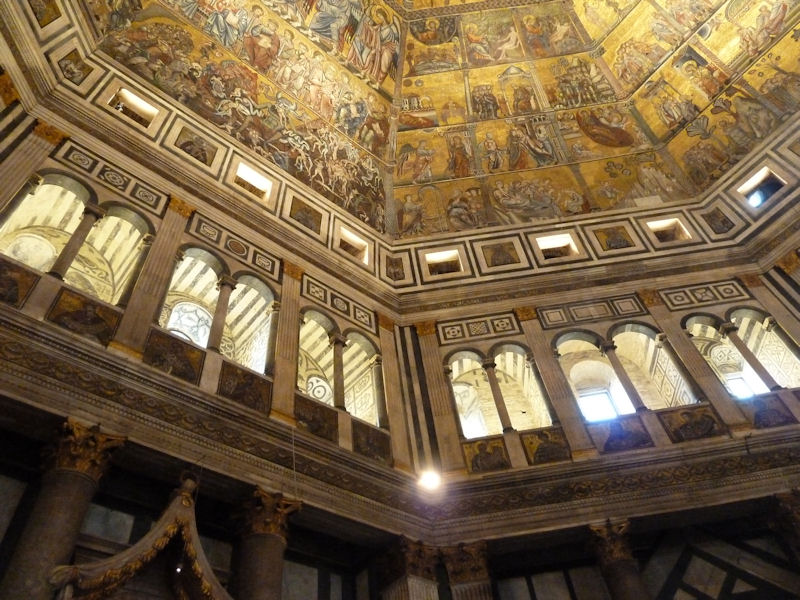
Upper galleries and more mosaics, including some forbidding flights of the paranoid imagination over on the left . . .
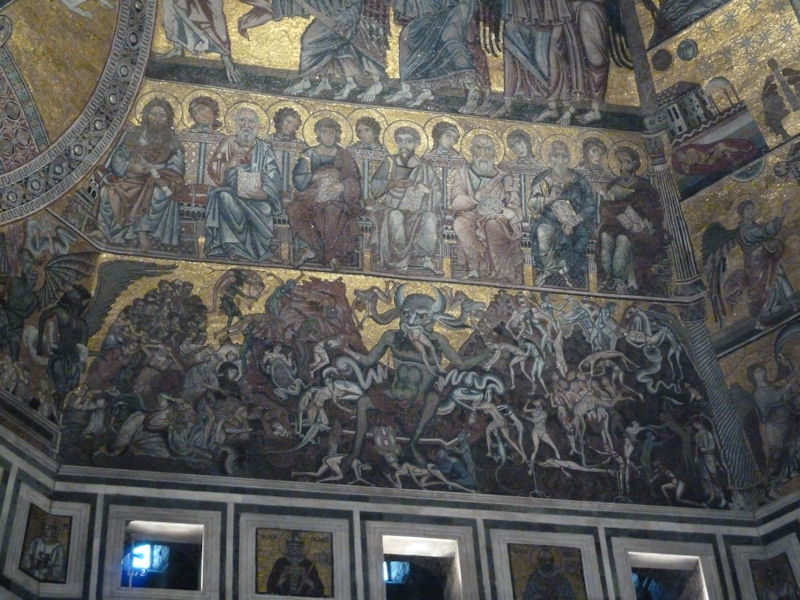
. . . Definitely the wrong side of the Last Judgment motif!

With an uncanny resemblance to the Congressional leadership going after the Welfare Cheaters

A last look round the Baptistry
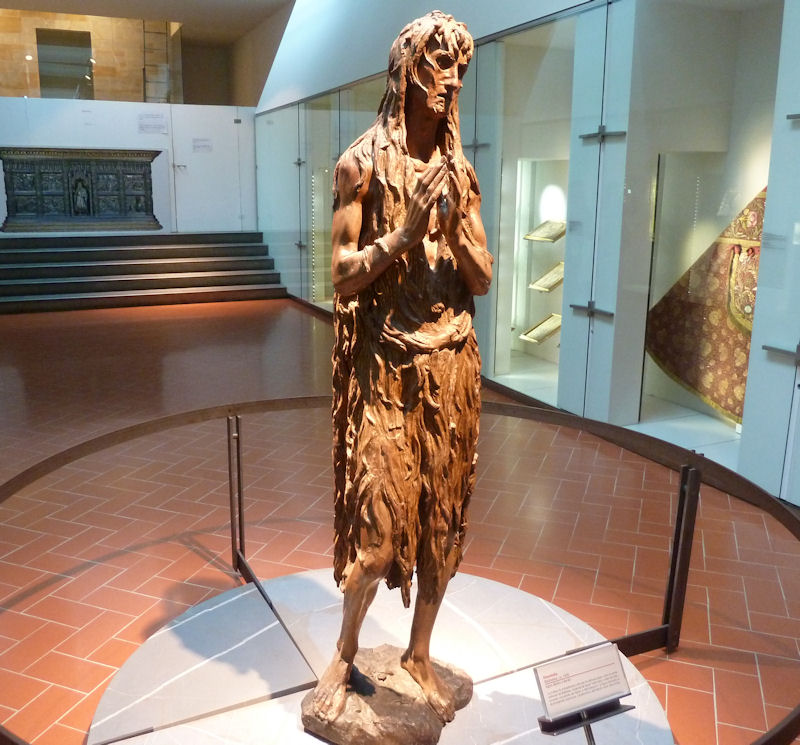
As an informal collector of images of Mary Magdelene, we've been getting tired of all the stock-image voluptuous ex-prostitute Magdalenes newly penitent, stark naked but modestly covered by floor-length perfumed hair. So Donatello's horrific 'Magdalene Penitent' in the Museo dell'Opera del Duomo (ca.1454), the ancient, wasted, victim of her misspent life, comes as a welcome shock. (In fact, in many of the earliest Christian traditions, according to Bart Ehrman's Peter, Paul, & Mary Magdalene, 2006, Mary was extolled as Christ's closest confidant and keeper of his Wisdom, who was implored by the surviving Apostles to pass it on to them.)

The awful Neptune Fountain in the Piazza della Signoria, by Ammannati with an assist from Giambologna, boasts still another tribute to Cosimo I de' Medici (like most everything else roundabout) in the main piece, no better or worse than others in the genre, but the figures surrounding the fountain are truly misshapen and horrible.
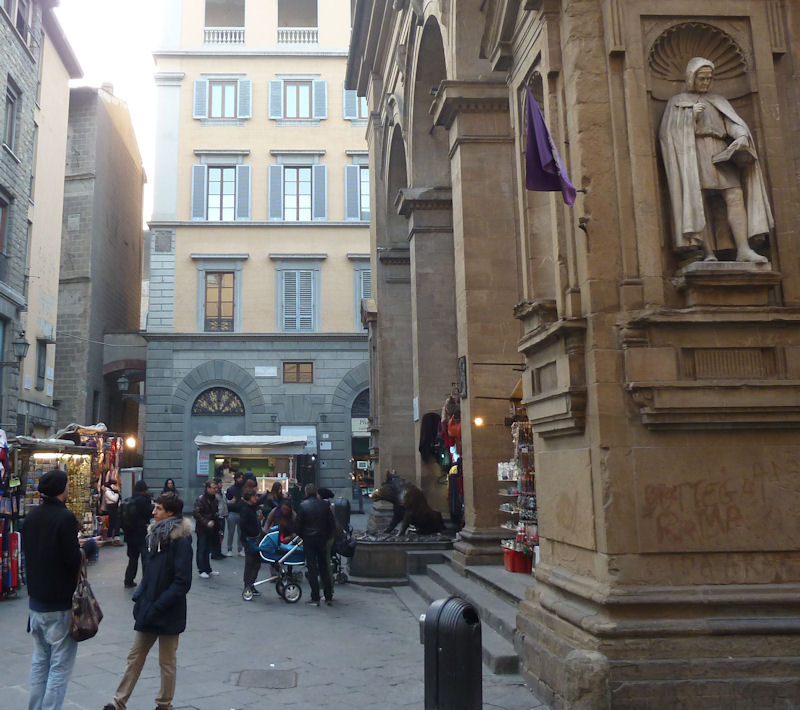
The Porcellino, awaiting the polishing of his nose and coins thrown into the basin . . . 'for luck'. [The tradition says that coin-throwers inevitably come back to Florence someday, unless their Social Security gets halved.]
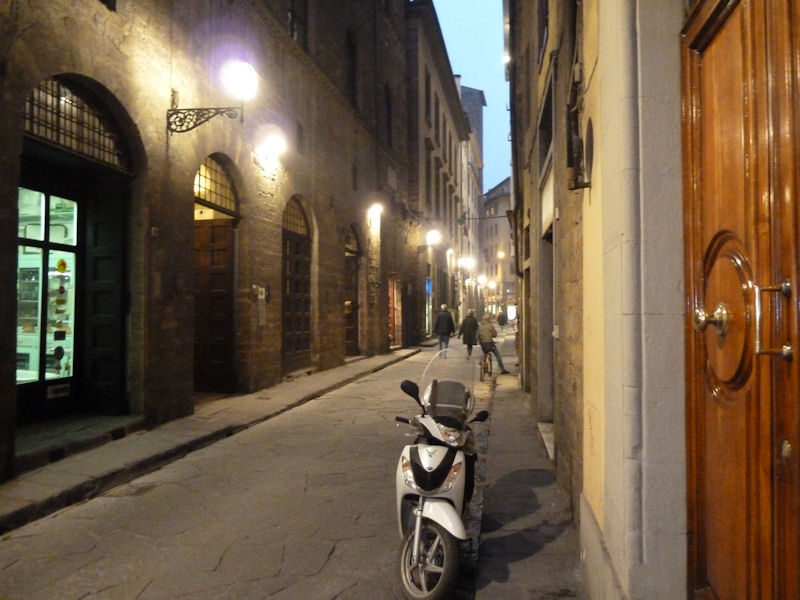
The Borgo S. S. Apostoli just near our hotel (no crowds, hoorah)
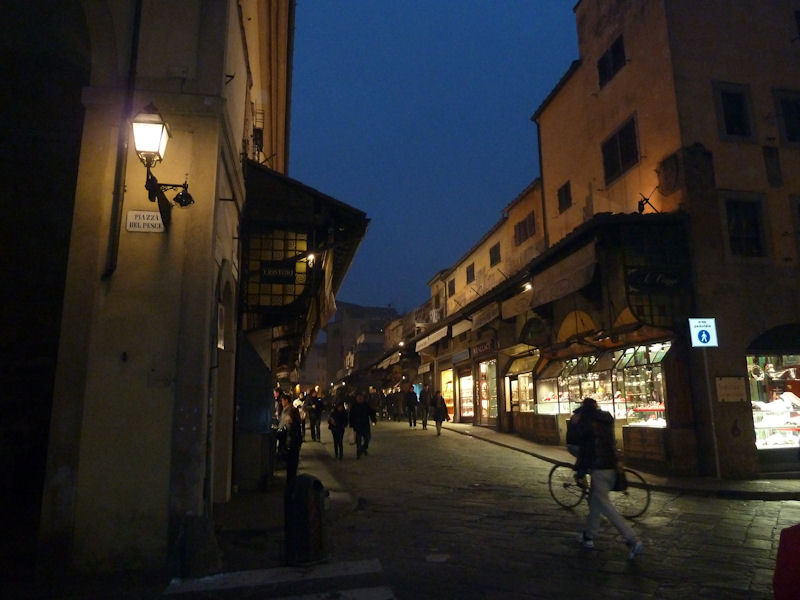
Via Por S. Maria, near the Ponte Vecchio
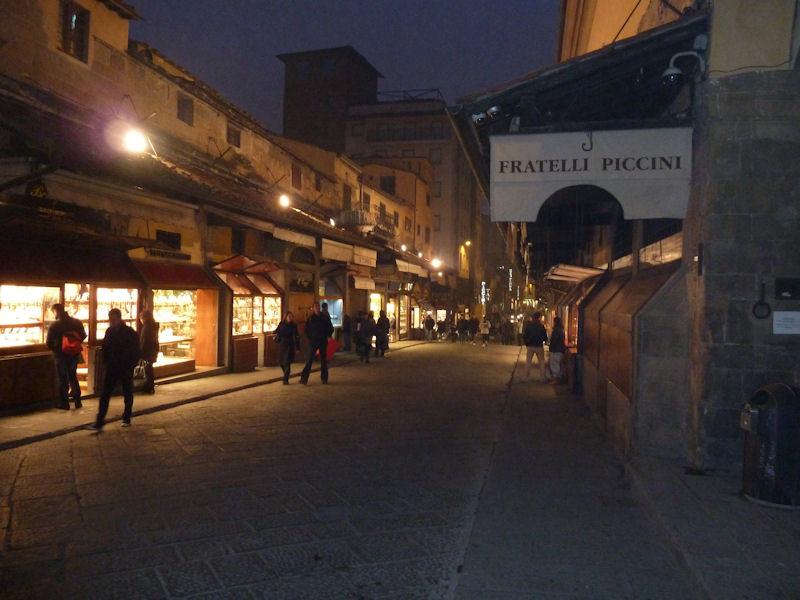
The Ponte Vecchio by night
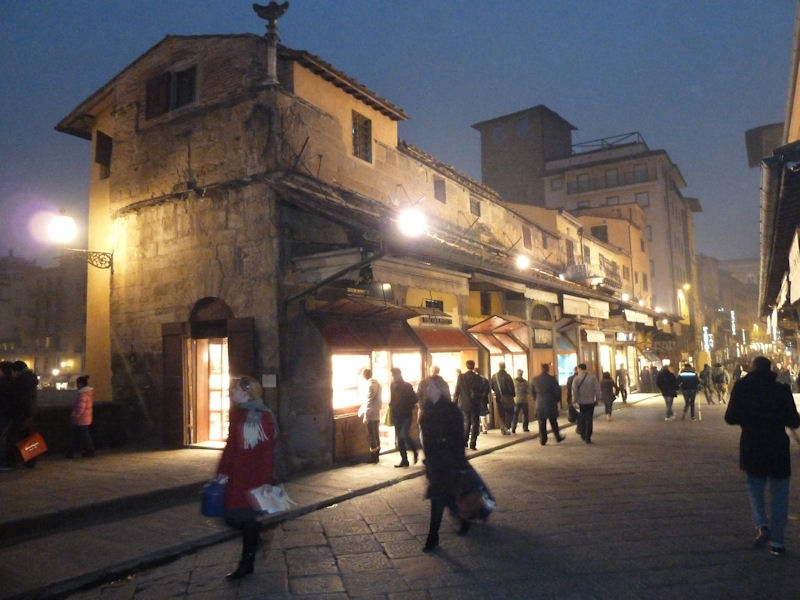
Ditto
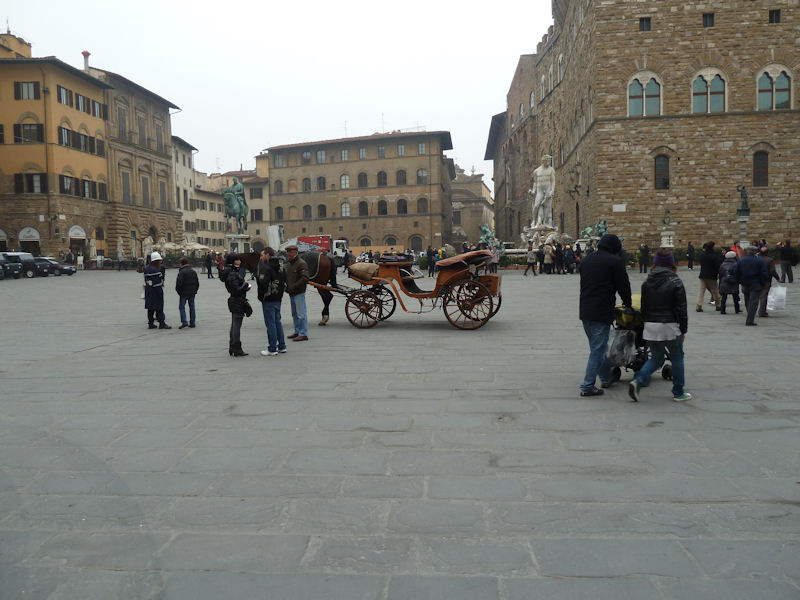
The Piazza della Signoria, with Big Cosimo on his bronze horse and a real horse waiting to gallop up and down the thoroughfares.

The museum of the Palazzo Vecchio in the Piazza della Signoria: the main courtyard just in the front doors

"The Standoff"
An awful dilemma for Hercules in Diomedes' desperate grip. Appalling art by Vicenzo de Rossi, mid-16th century.

The Hall of the 500, built in 1494 for the republican Grand Council of 500 members, enlarged half a century later by Vasari for the Grand Duke Cosimo I. The enormous Vasari frescoes all over the walls instruct us in the military brilliance and valor of . . . Cosimo I, the Grand Duke.

Another Moses with horns on (the "cornuta")

The Unreconciled (some people never get with the programme)

The Piazza Santissima Annunziata, out the front door of the Ospedale degli Innocenti, the orphanage founded by the Silk Guild and built by Brunelleschi beginning in 1419. The silly statue, which looks very like another Cosimo I de' Medici, is actually Giambologna's predictable take on Ferdinand I de' Medici, Grand Duke of Tuscany, in about 1608.

The goofy fountain, dating from 1640, outside the orphanage of the Innocents (right)
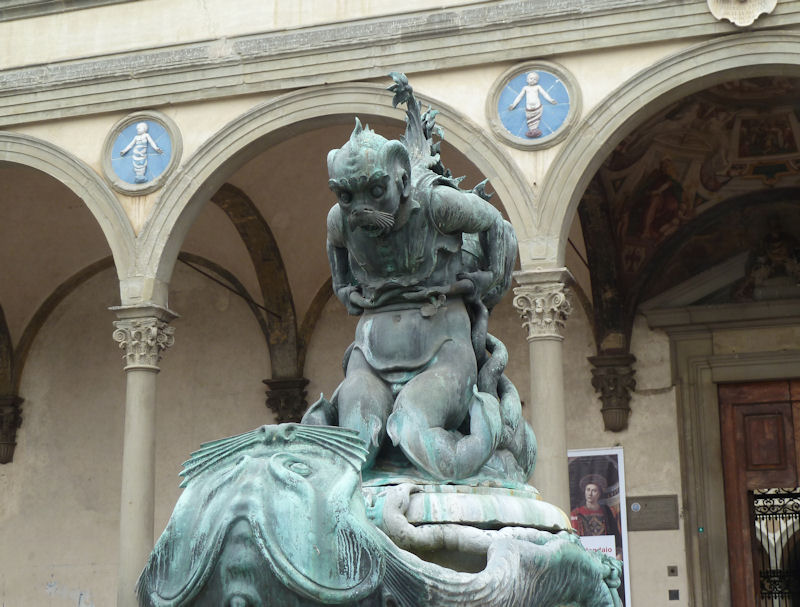
Amazing prescience for an artist who had never actually seen a modern ICE 'Deportation Officer'
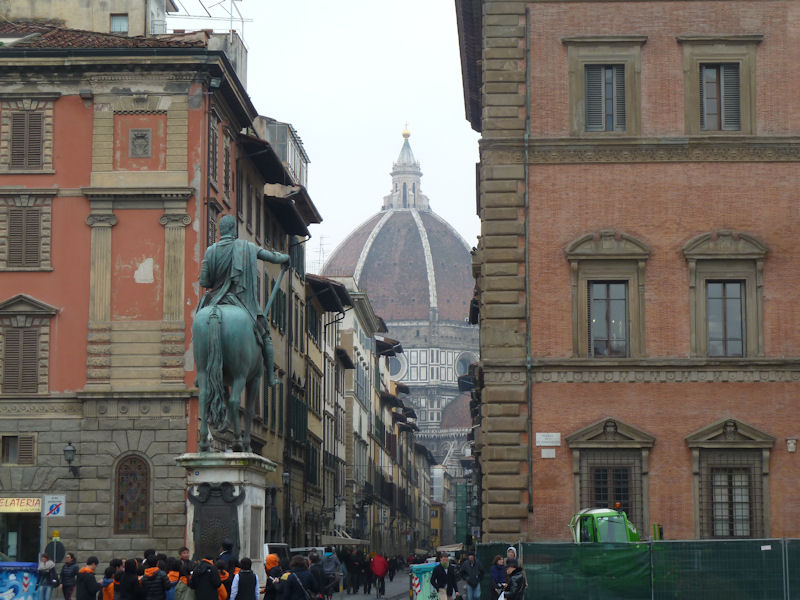
The back end of Grand Duke Ferdinand and his horse, and the Duomo
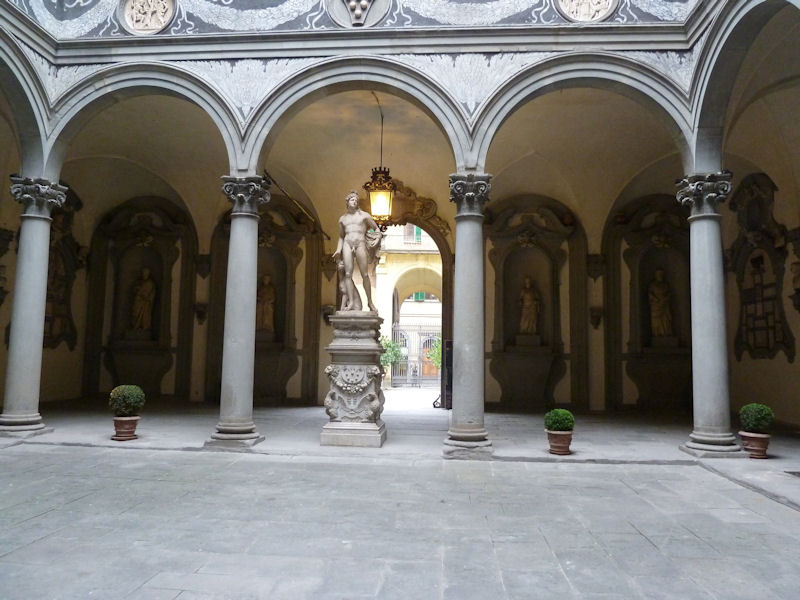
The courtyard of the Palazzo Medici Riccardi
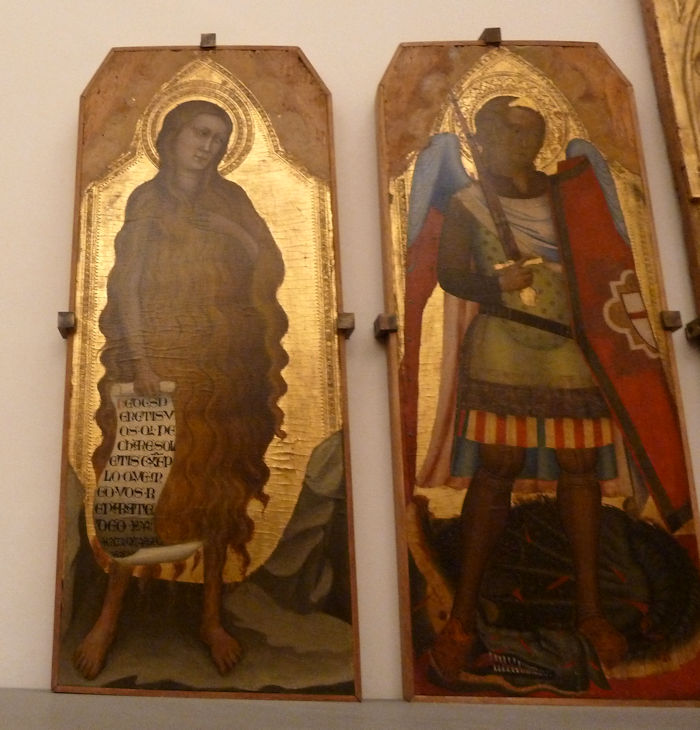
On the left, part of the ''Repentant Magdalene and eight stories of her life', tempera on wood, by the so-called Maestro della Maddalena, ca. 1285, in the Galleria dell'Accademia
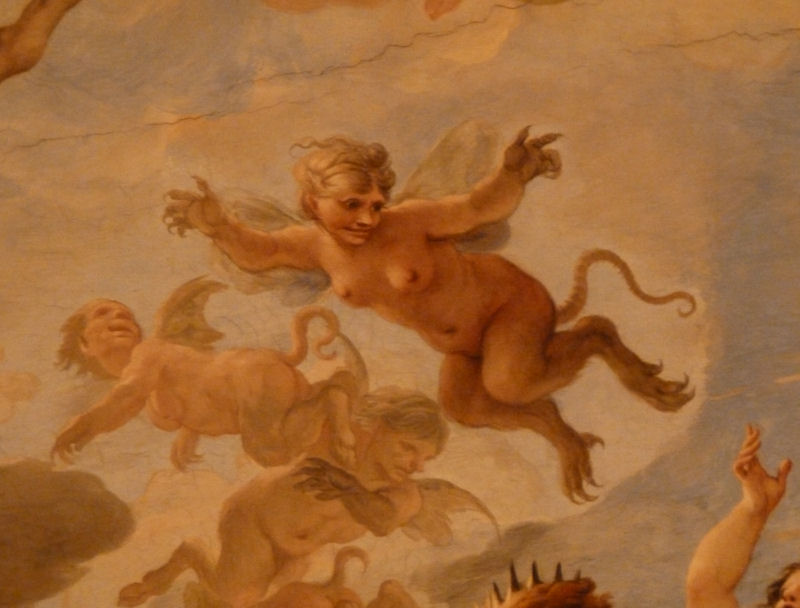
The party girl
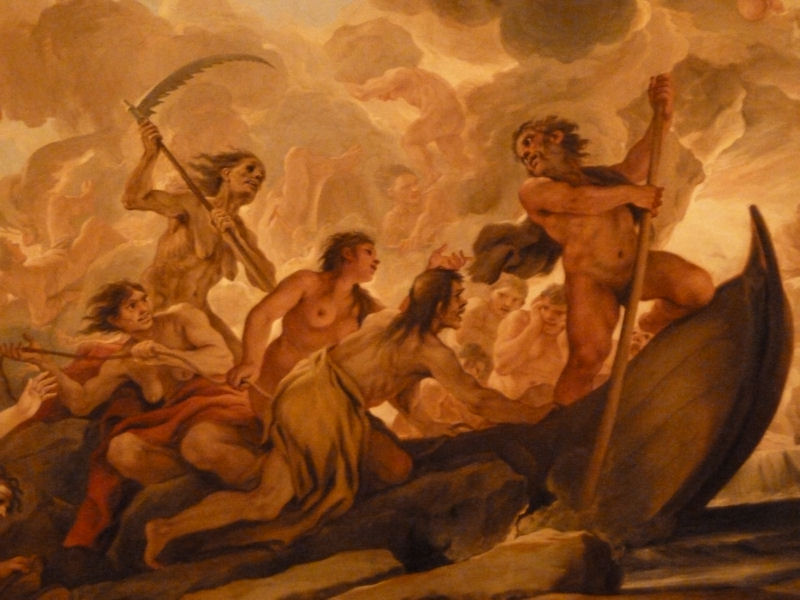
Crossing the River Styx, as rapidly as possible

The enemy within
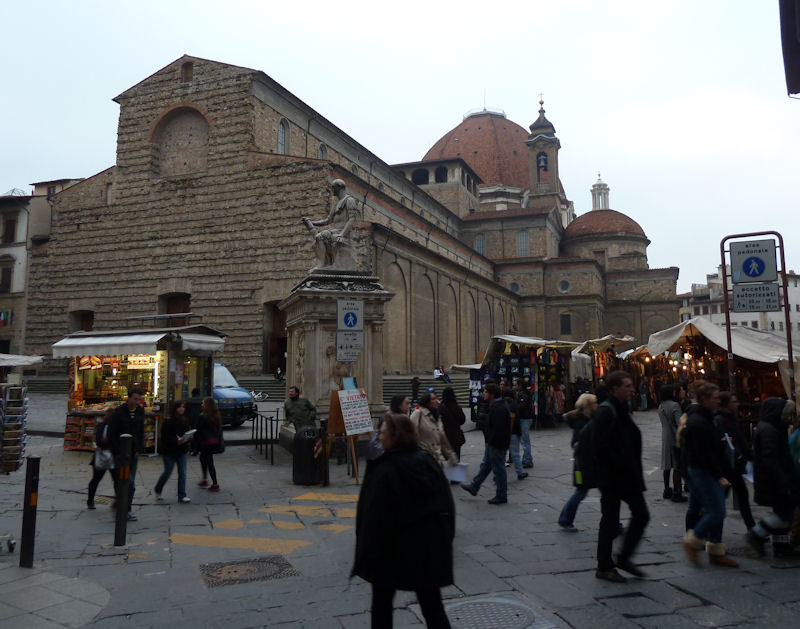
The Basilica di San Lorenzo, parish church of the Medicis (they're all buried there). It was begun in 1419 to a design by Brunelleschi and sort of completed by 1459, but the city of Florence is presently still debating whether to finish the façade.
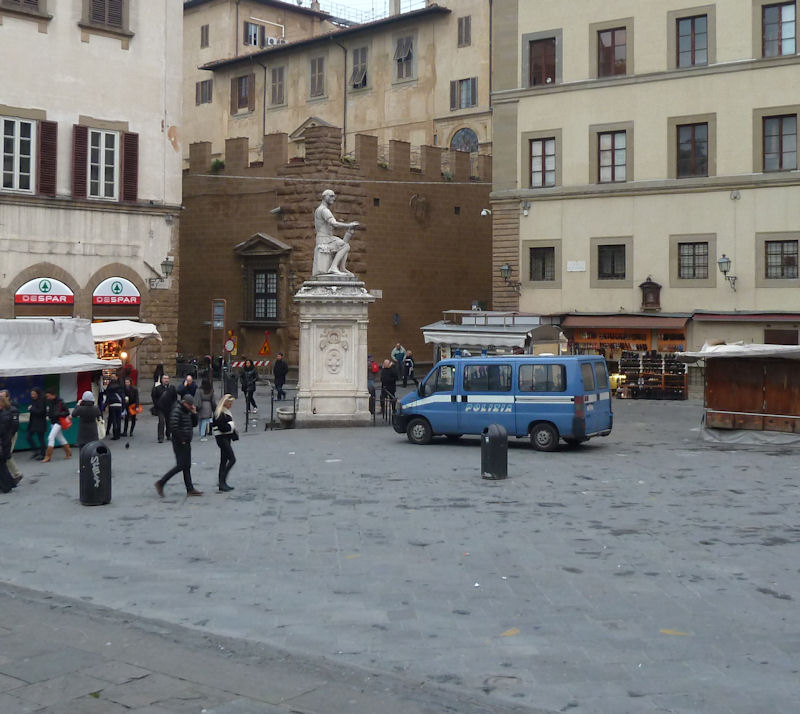
Busted
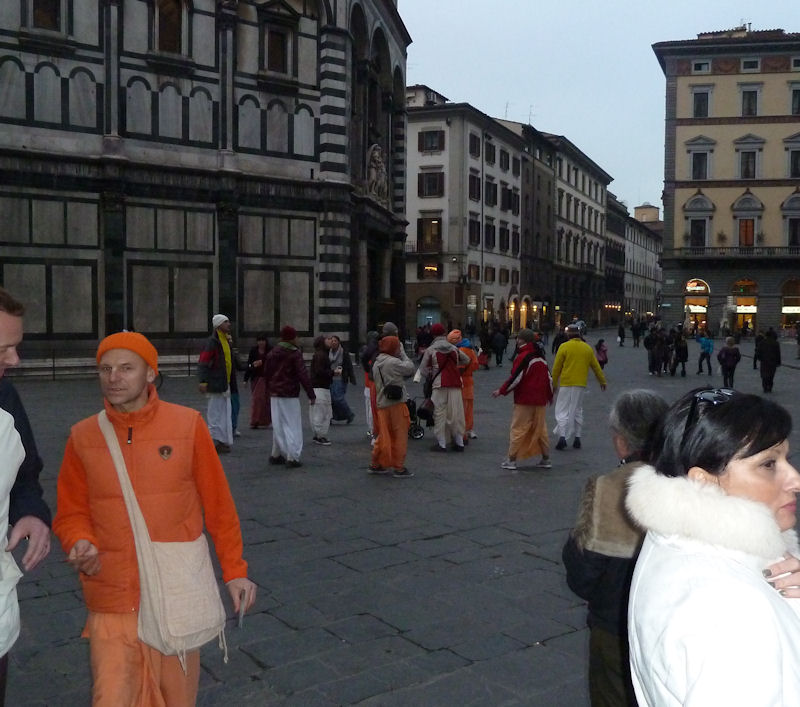
The spooky Hare Krishnas were out every afternoon, bouncing around the tourist hotspots in funny orange suits and chanting "hare krishna hare krishna, krishna krishna hare hare, hare rama hare rama, rama rama hare hare" through a portable amplifier, with drum accompaniment. And of course, accosting the civilians.
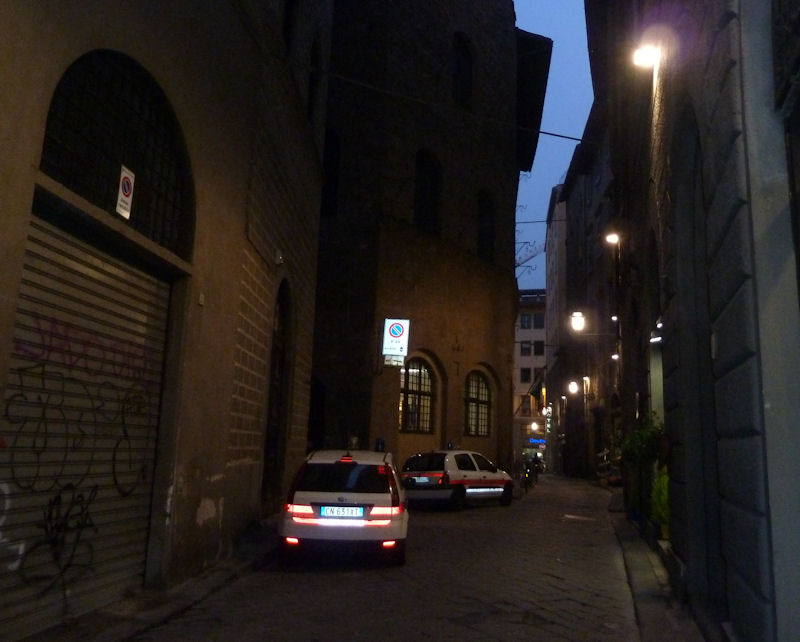
The local police station
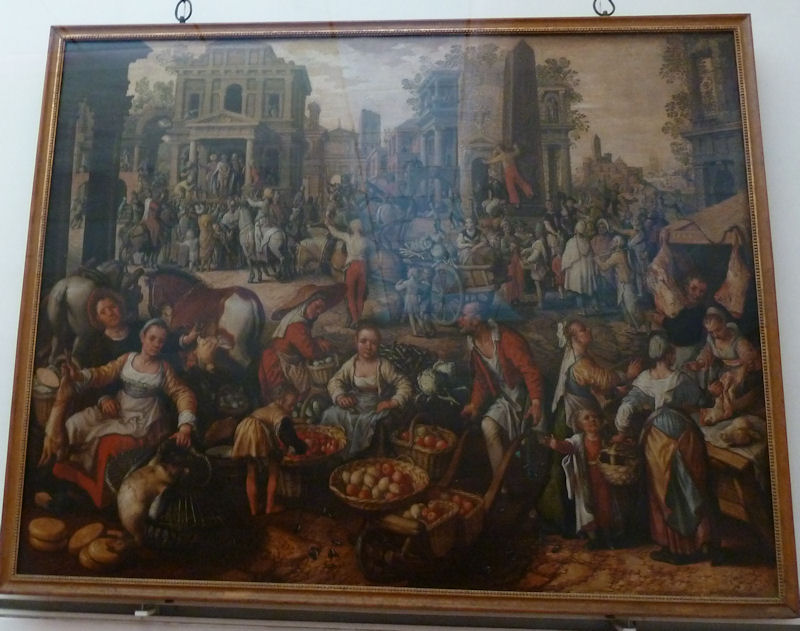
Increasingly our favorite, Joachim Beuckelaer of Antwerp (1533-1574) -- we bagged four more of his a few months ago, not dissimilar from this, in the Capodimonte in Naples, and another in Strasbourg just the other day. A likable genius! (This is in the Uffizi)

Neptune profoundly out of his element
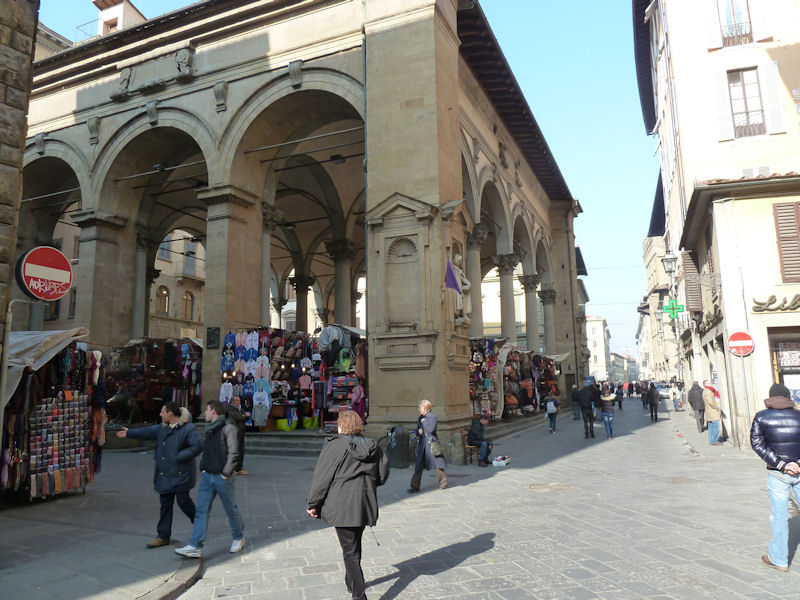
Back past the Straw Market to rub the Porcellino's nose and take a little nap
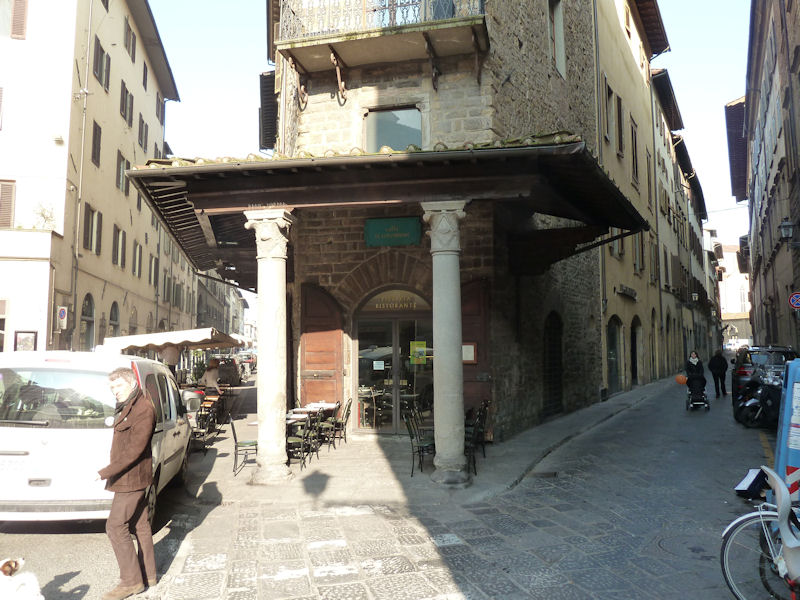
Near the Borgo S. Croce on our way to gawk at the "Gothic masterpiece"

The late 13th century basilica of Santa Croce, a Gothic masterpiece for sure.
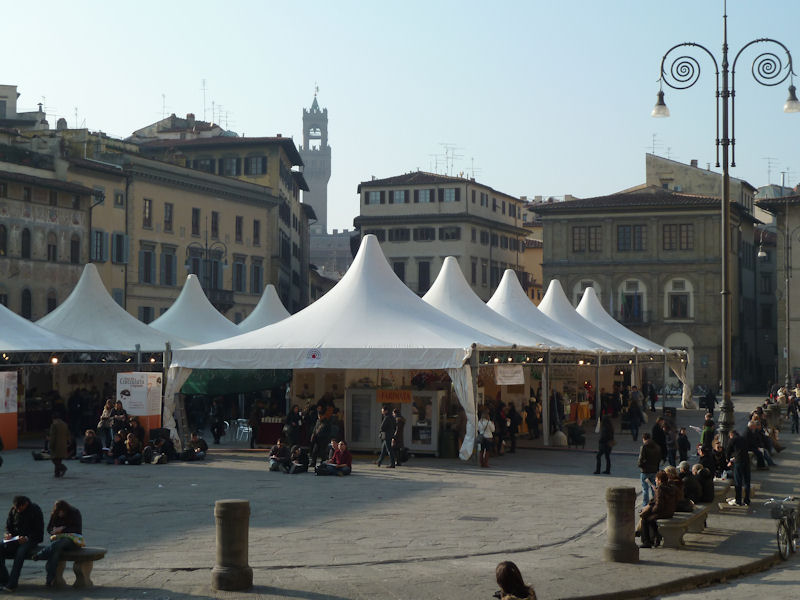
This is the Piazza Santa Croce out the front of the church, scene of medieval jousting tournaments, rough games of Florentine's special cutthroat football game annually, and the modern Festival of Chocolate, as above.
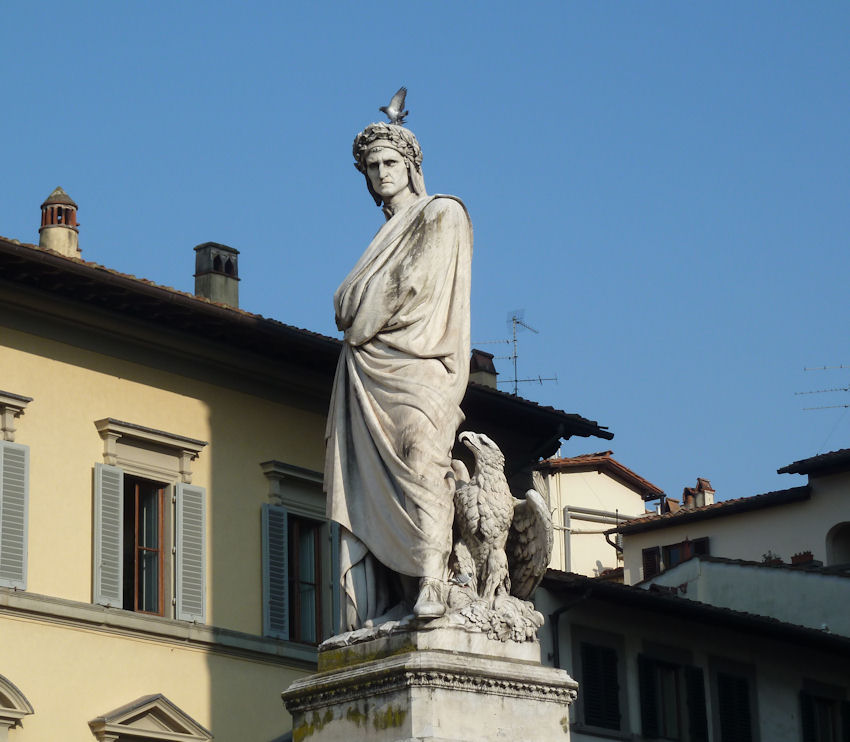
Dante Alighieri scowls down up the festivities, with his birds (19th century).
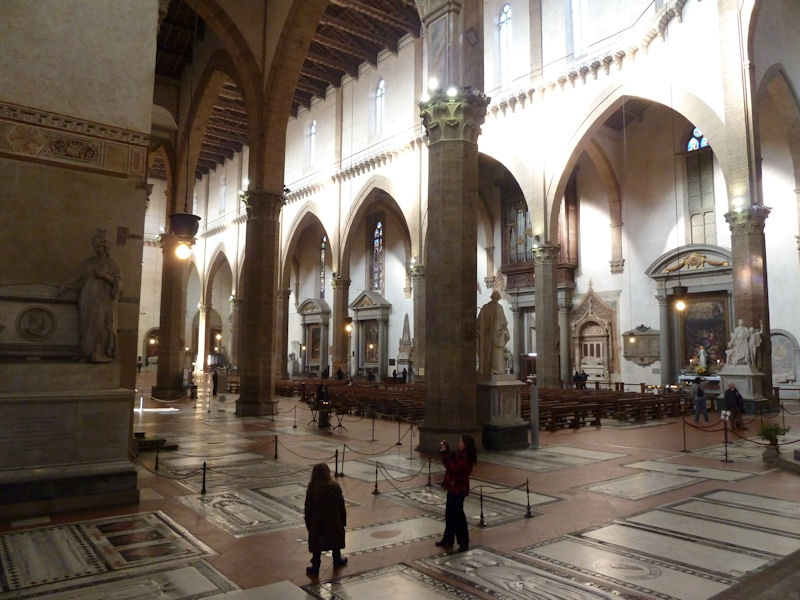
Very nice church, great furnishings etc., but S. Croce's probably best known for its dead celebrities.

Like Michelangelo Buonarroti, who died in 1564
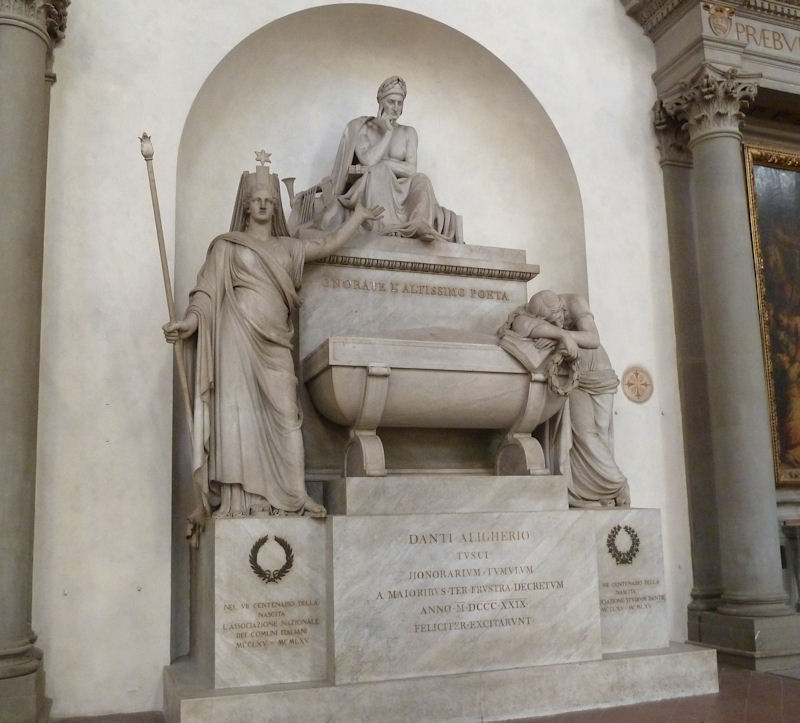
And Dante Aligheri (great tomb, missing only Dante)
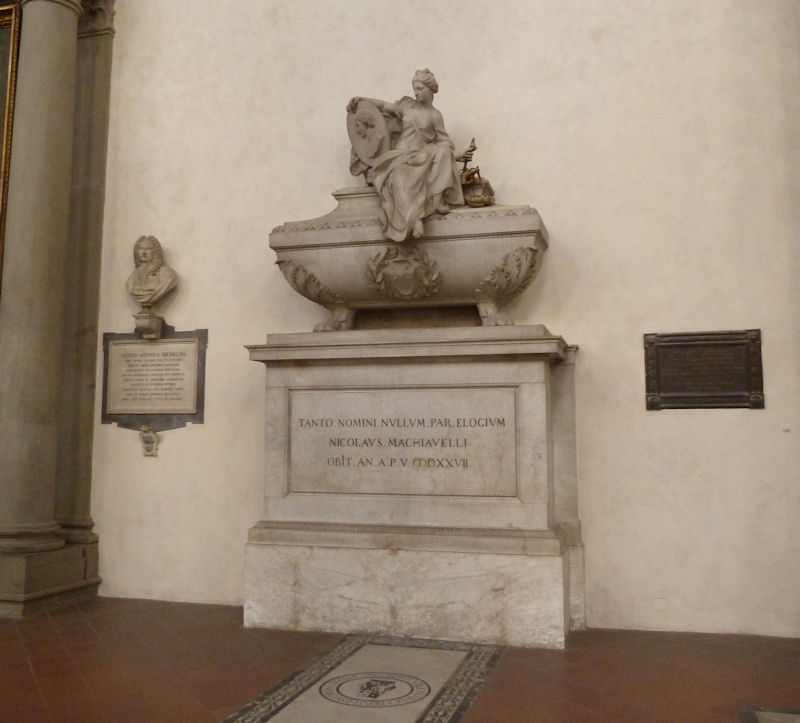
And Machiavelli, who died in 1527. There's also a neat plaque to our hero Marconi, but he's not actually behind it. Never mind. Ditto Enrico Fermi. But Leon Battista Alberti is here, supposedly, and of course . . .

Galileo.

Not to mention Rossini, who died in Paris in 1868 but was extradited to Italy in 1887 and buried here
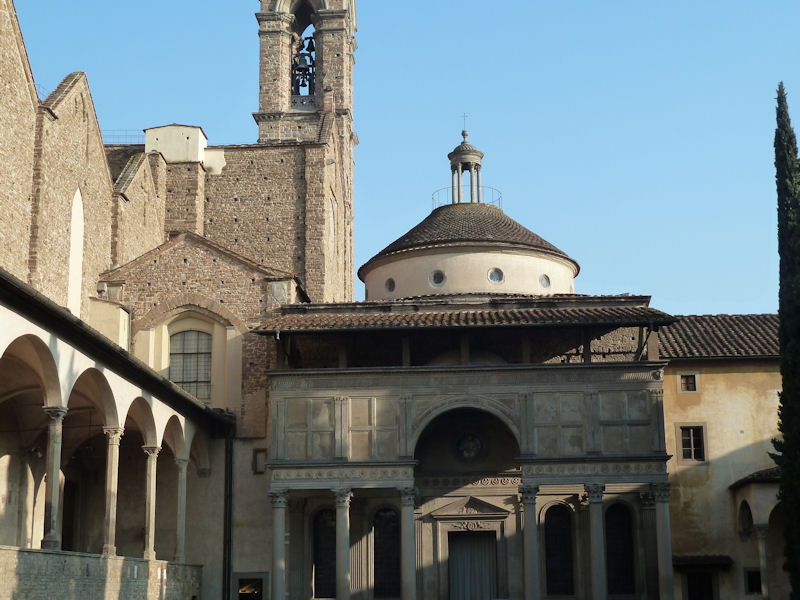
This is the Pazzi Chapel at the end of the adjacent Franciscan cloister (possibly by Brunelleschi).
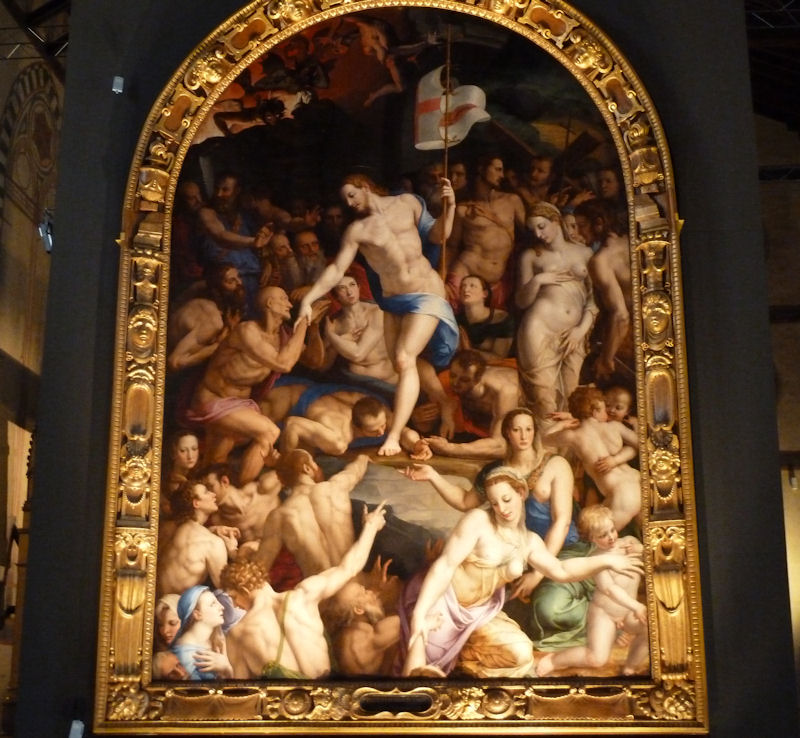
Bronzino's "Descent of Christ into Limbo" (1552) -- who's the prettiest babe? Let's find out.
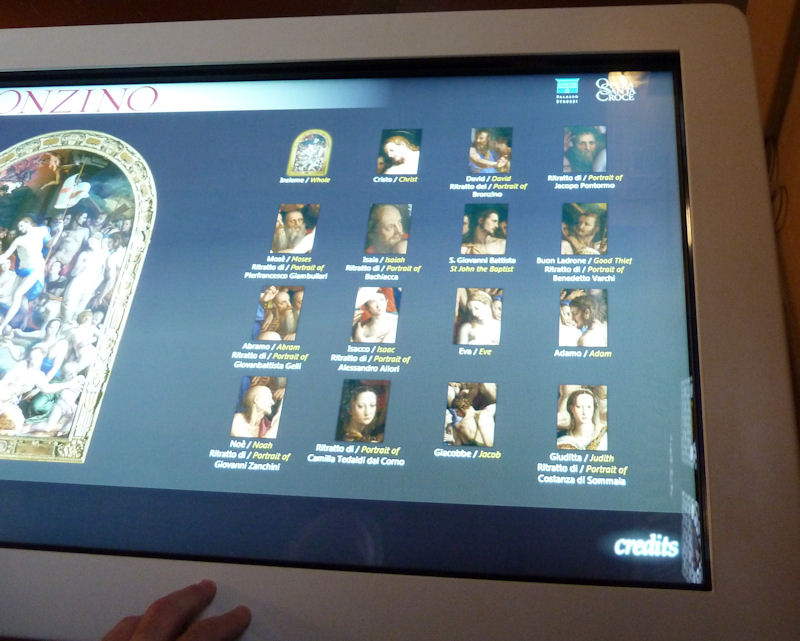
Most of the figures are real people from Cosimo's court -- How about Costanza di Sommaia (lower right)? Push the button.

What a babe, in the blue gown. Almost as pretty as Bronzino's portrait of Lucrezia Panciatichi. Following the confusions of the Florentine flood of 1966, this thing only resurfaced (so to speak) in 2003 and has been magnificently restored, with the touchscreen didactics alongside it. [What a babe. Still, no Lucrezia Panciatichi.]
 Dwight Peck's personal website
Dwight Peck's personal website